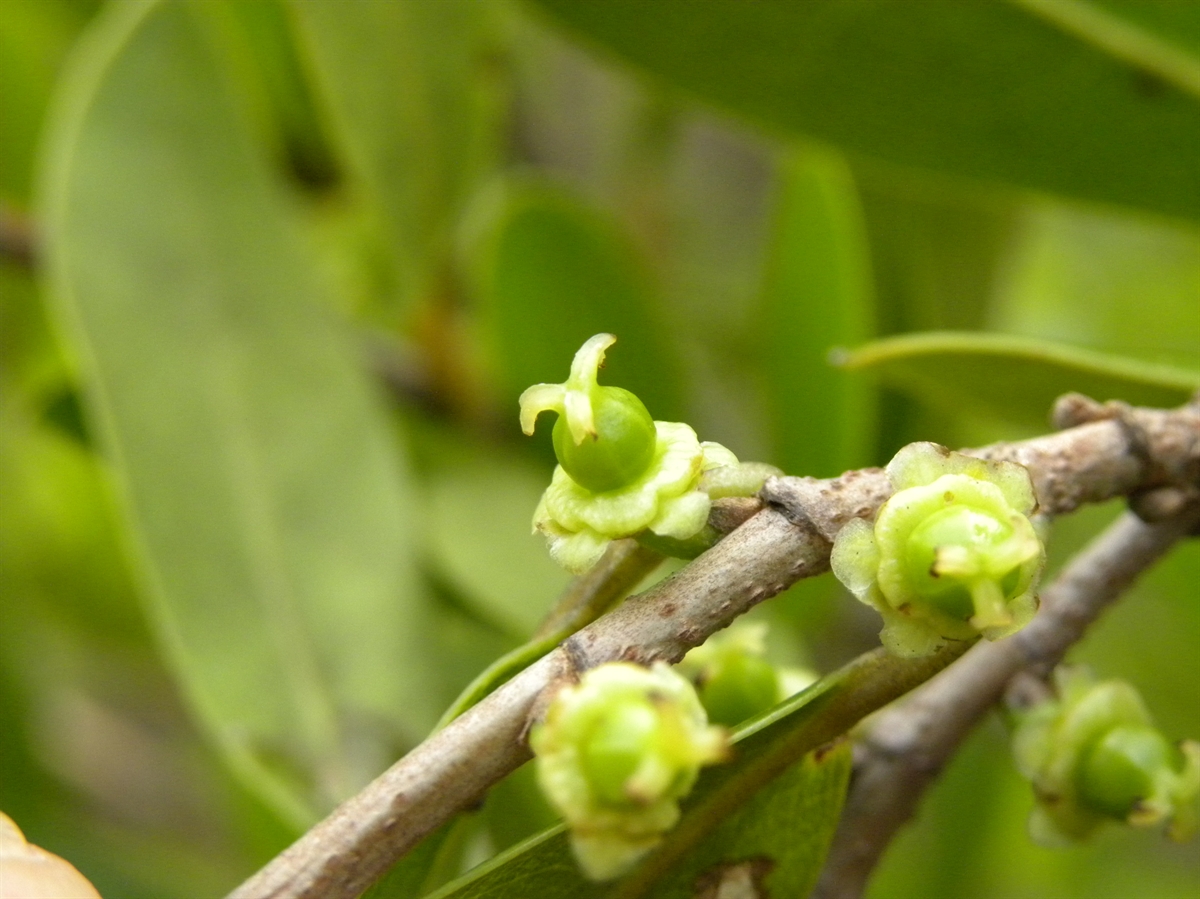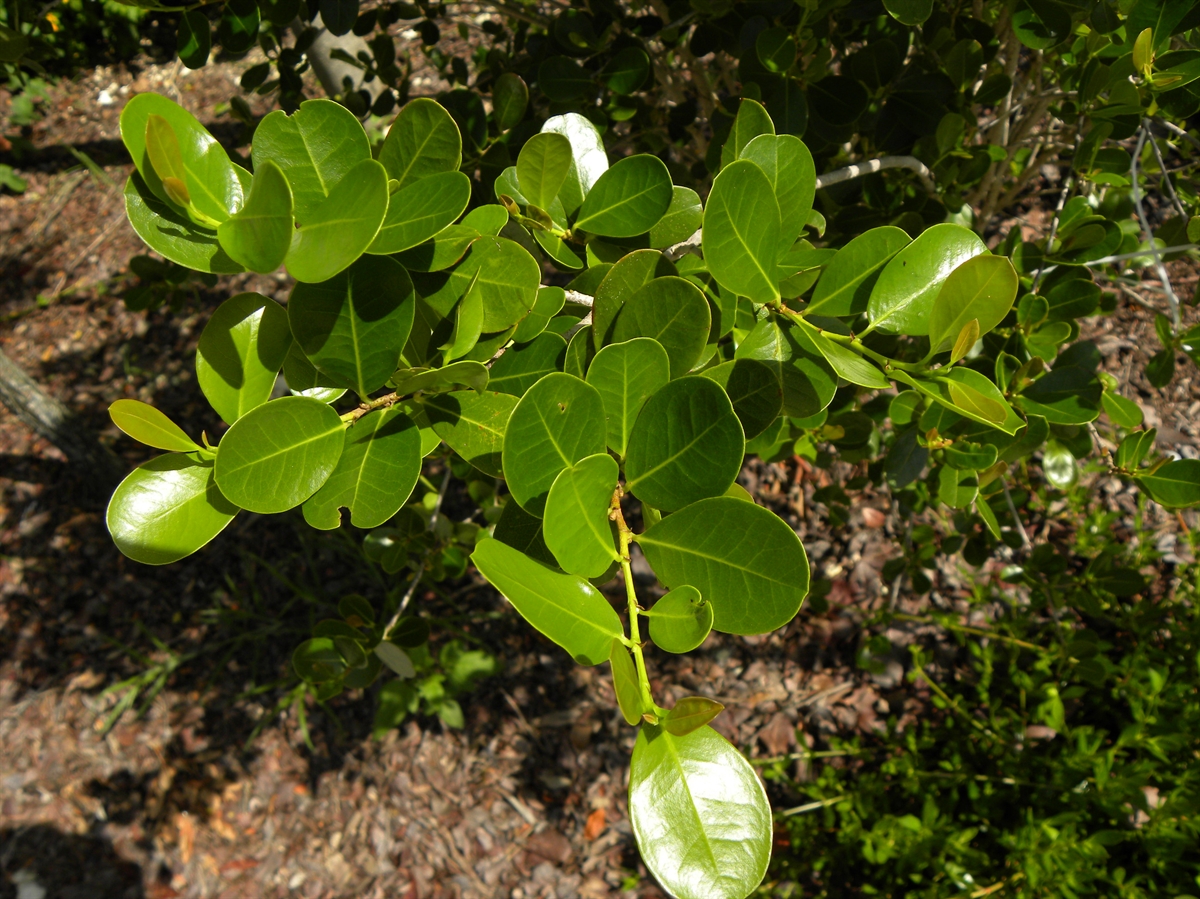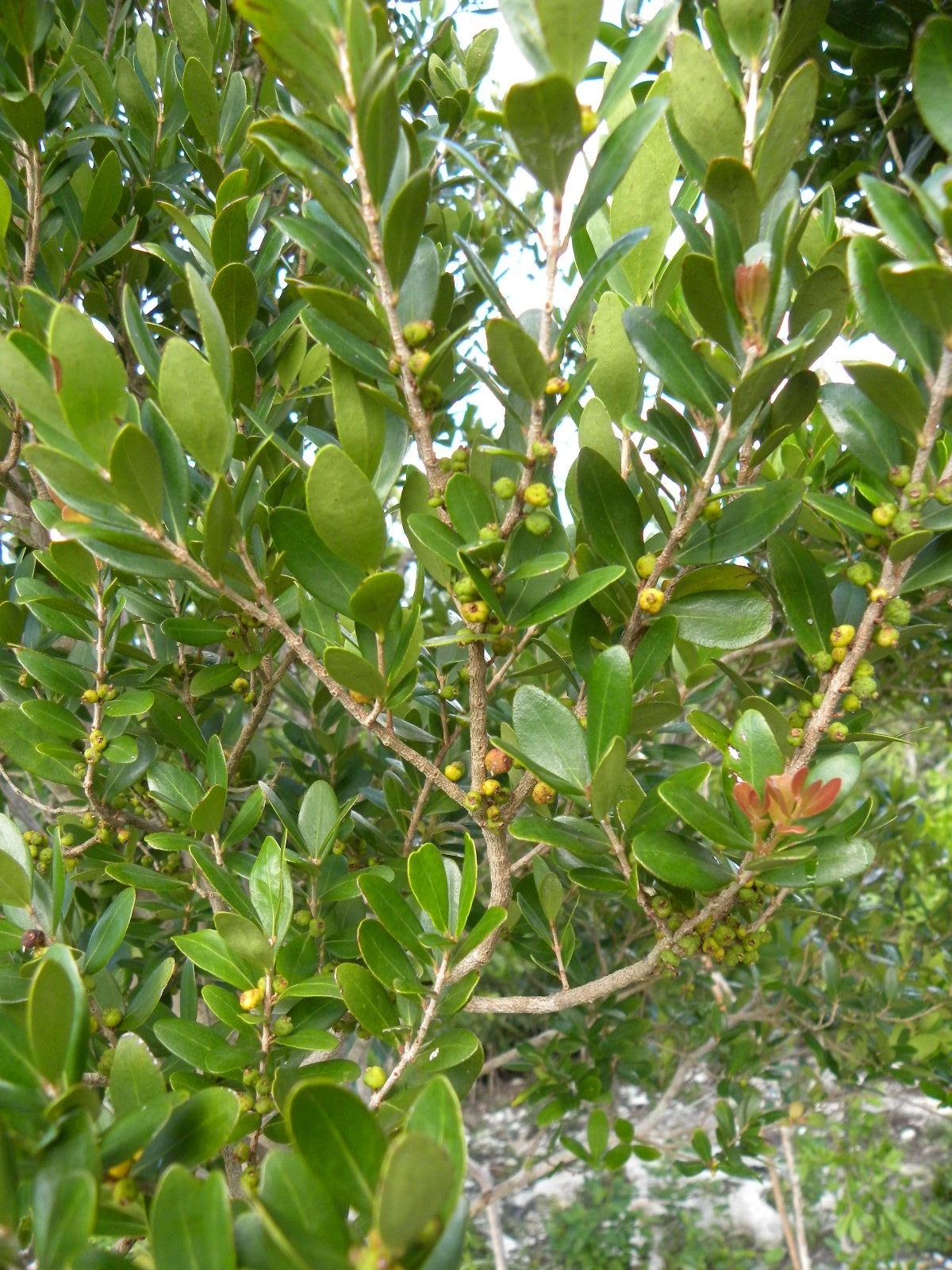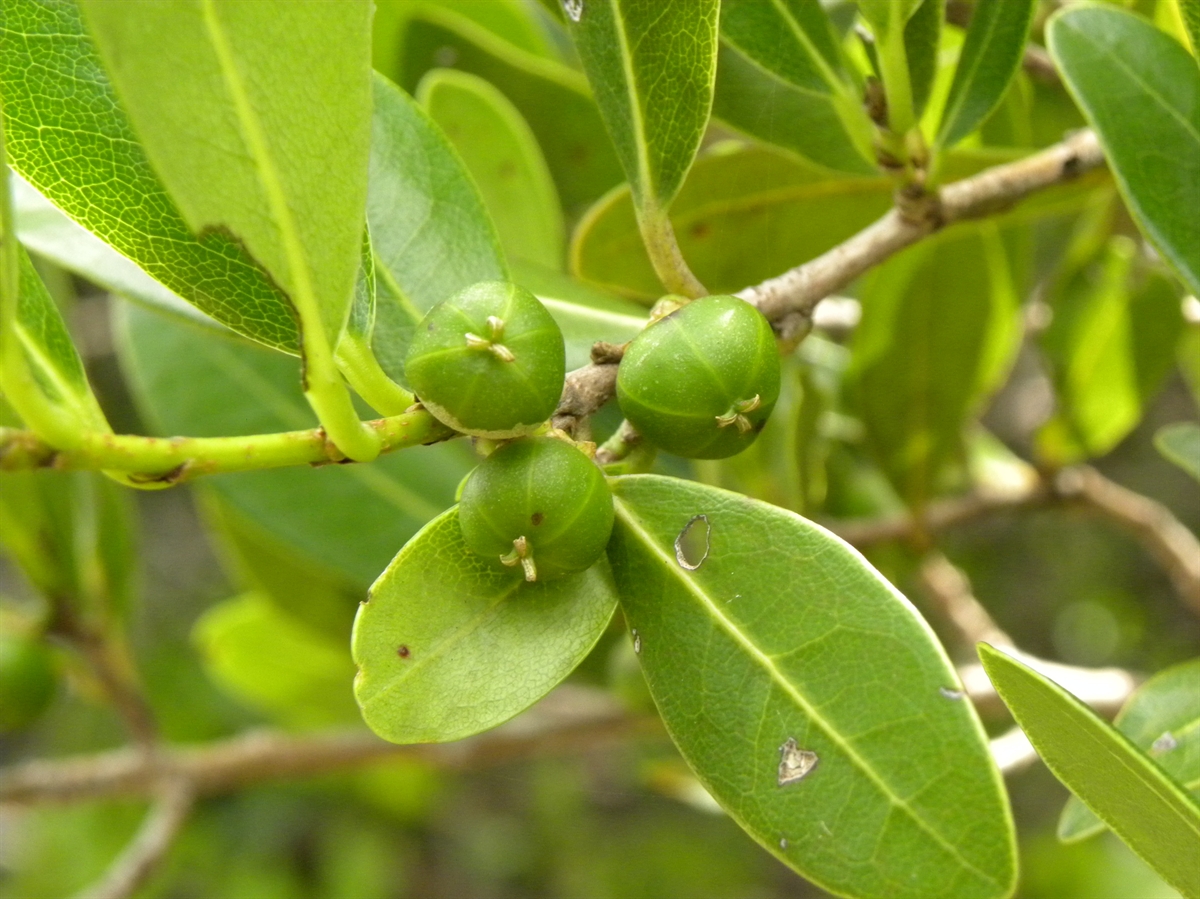Habit: Heterosavia bahamensis grows as a shrub to small tree up to 5 meters in height. The leaves are arranged alternately, to 7 cm, elliptic to oblong/obovate with a rounded leaf apex and an entire margin. There are paired stipules at the petiole base.
Heterosavia bahamensis is dioecious. The incomplete, imperfect, actinomorphic flowers emerge in clusters in leaf axils. The calyx has 5 unfused greenish sepals. The corolla has 5 small, unfused petals. Staminate flowers occur in caulescent groups of 8 -14 with 5 stamens and a nonfunctional ovary. Carpellate flowers are solitary in leaf axils with no stamens and 3 locules and multiple ovules. The fruit is a 3-lobed capsule at maturity.
The fruits may be tomentose. Based on this character the tomentose individuals can be considered H. erythroxyloides.
Habitat: Heterosavia bahamensis grows in Dry Broadleaf Evergreen Formation – Forest/ Woodland/Shrubland/Dwarf Shrubland (coppice, scrubland, dwarf shrubland).
Distribution: Heterosavia bahamensis occurs on all island groups in the Lucayan Archipelago as well as Florida and the Caribbean region.
Medicinal/Cultural/Economic usage: Heterosavia bahamensis is not used medicinally in the Lucayan Archipelago.
It is part of the horticultural industry.



